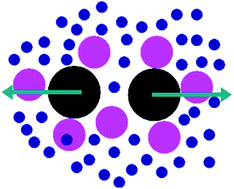Caffeine dimerization: effects of sugar, salts, and water structure
Abstract
Sugars and salts strongly affect the dimerization of caffeine in water. Such a change of dimerization, considered to be crucial for bitter taste suppression, has long been rationalized by the change of “water structure” induced by the additives; “kosmotropic” (water structure enhancing) salts and sugars promote dimerization, whereas “chaotropic” (water structure breaking) salts suppress dimerization. Based on statistical thermodynamics, here we challenge this consensus; we combine the rigorous Kirkwood–Buff theory of solution with the classical isodesmic model of caffeine association. Instead of the change of water structure, we show that the enhancement of caffeine dimerization is due to the exclusion of additives from caffeine, and that the weakening of dimerization is due to the binding of additives on caffeine.


 Please wait while we load your content...
Please wait while we load your content...